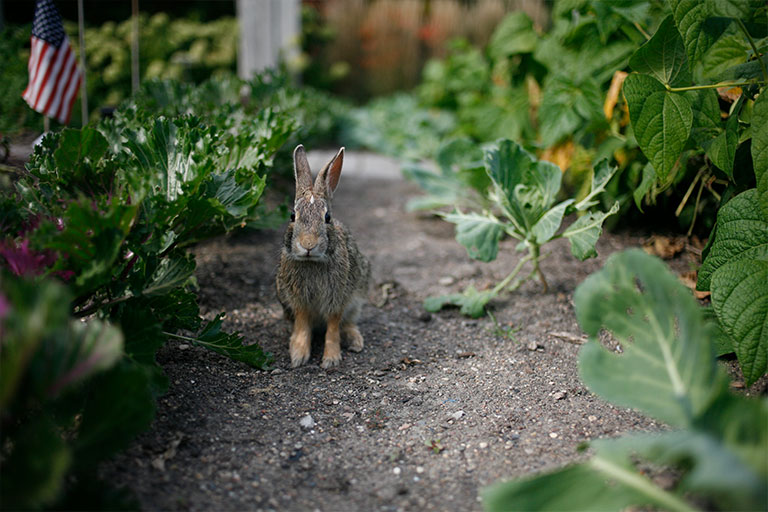By Vicki Spencer, Master Gardener
Years ago I was deeply moved by the movie “Rabbit-Proof Fence,” which is based on a book by Doris Pilkington. The movie features three mixed-race girls who were removed from their Aborigine homes and sent more than a thousand miles away to a government school to learn how to fit into modern Australian society. The girls missed their families and decided to run away. They believed they could find their way home by following the rabbit-proof fence, which ran from coast to coast and crossed their homeland. When watching the movie, I focused on the role the fence played in guiding the girls home. Now that rabbits are devastating my garden, I have been reflecting on the significance of the fence for farming in the Outback.
Is it really possible to build a rabbit-proof fence?
Garden stores advertise rabbit fencing, but it won’t do any good unless it is installed properly.
To begin, hammer fence posts 12 inches into the ground at each corner of your garden area. Place additional posts about 6 feet apart between the corner posts. Adding a horizontal strip of wood along the top and bottom of the fence will provide additional strength.
Once all the posts are in place, dig a trench 6 to 12 inches deep along the garden boundary. Install vinyl-coated fencing or chicken wire (1-inch or smaller mesh) between the posts so that it extends down into the trench and at least 2 feet above ground. You can attach horizontal lengths of wood along the bottom of the fence for additional protection. Next, secure the wire tightly and cover the trench with soil. It’s important to bury the chicken wire or vinyl fencing underground so that rabbits cannot burrow into your garden.
If you cannot dig deep into the soil along the border, you can create a ground barrier by bending 12 inches of the fencing at a 90-degree angle. Place the 12-inch flap along the soil on the outside of the garden. Pin it down with stakes, and then tie the larger section of wire tightly to the fence posts. Cover the chicken wire or vinyl fencing on the ground with a thick layer of soil and top with rocks or paving stones.
Although the fence creates a barrier for the rabbits, it does not repel them. You can use liquid or granular animal repellent for additional deterrence. Commercial repellents commonly use putrescent egg. It is odorless to us, but smells like rotting carcasses to rabbits. Since store bought repellents are expensive, you can try making your own. Mix 2 tablespoons cayenne pepper, 2 tablespoons garlic powder and squirt of dish detergent with 20 ounces of warm water.
Motion detector sprinklers are another deterrent. They provide bursts of water when movement is detected. This will startle rabbits and hopefully they will run away. But don’t forget to turn the sprinklers off before you garden or you might get an unexpected shower.
Although rabbits are annoying garden pests, with a little effort, you can still protect your vegetables and have an abundant harvest this fall. Gardener Vicki Spencer has an eclectic background in conservation, water, natural resources and more.
Gardener Vicki Spencer has an eclectic background in conservation, water, natural resources and more.

